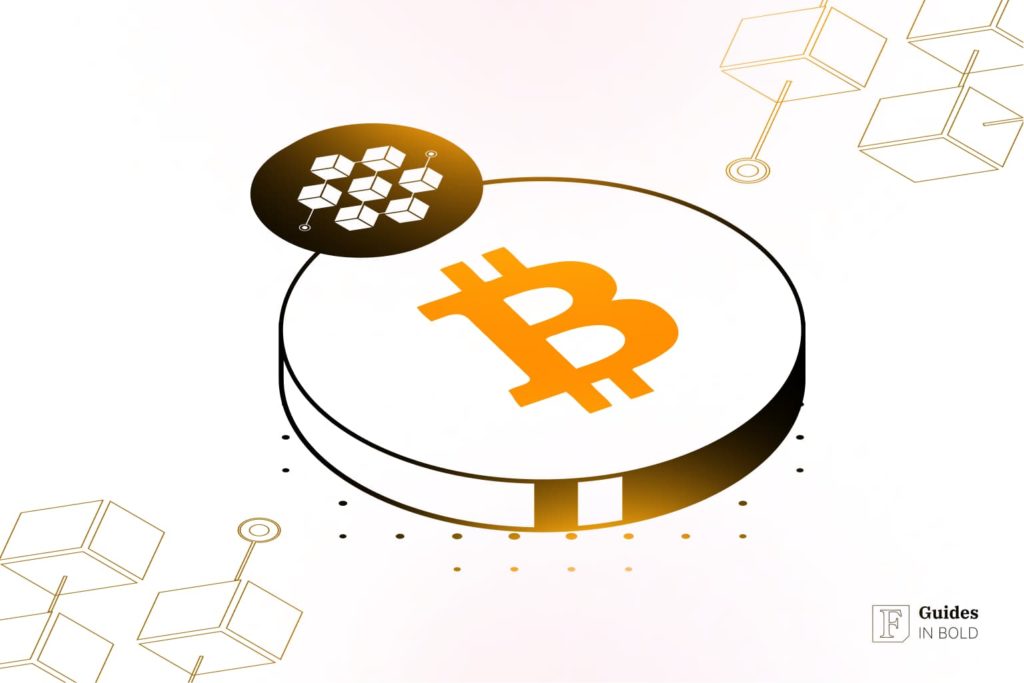IMPORTANT NOTICE
Finbold may provide educational material to inform its users about crypto and digital assets. This content is for general information only and does not constitute professional advice or training certification. Content is provided "as is" without any warranties. Users must conduct their own independent research, seek professional advice before making investment decisions, and remain solely responsible for their actions and decisions.
RISK WARNING: Cryptocurrencies are high-risk investments and you should not expect to be protected if something goes wrong. Don’t invest unless you’re prepared to lose all the money you invest.
By accessing this Site, you acknowledge that you understand these risks and that Finbold bears no responsibility for any losses, damages, or consequences resulting from your use of the Site or reliance on its content. Click here to learn more.
This guide will delve into DeFi on Bitcoin, explaining what DeFi is and how it has been applied to the Bitcoin network, as well as consider some challenges inherent within this nascent ecosystem. Additionally, we highlight notable projects within this space and consider their advantages over others created on rival blockchains.
What is DeFi?
Definition
DeFi is more dominant on the Ethereum (ETH) network, a leading smart contract platform and the second-largest blockchain by market capitalization. Ethereum has benefited from a first-mover advantage in this field, being the first public network to support decentralized apps (dApps) since 2015.
However, it is increasingly facing stiff competition from newer blockchains, including Solana (SOL), Avalanche (AVAX), Cardano (ADA), and Polkadot (DOT). Often overlooked in this conversation is Bitcoin, the flagship blockchain network designed to enable peer-to-peer online transactions.
Recently, however, developers on the Bitcoin network have found ways to expand its capabilities beyond payments, and it is now possible to launch DeFi applications native to the Bitcoin ecosystem.
What is DeFi on Bitcoin?
DeFi on Bitcoin is a feature that was introduced in November 2021 thanks to the successful implementation of the Taproot upgrade, which enabled greater functionality with regard to complex scripting. With Taproot, Bitcoin coud now support decentralized apps, making it a viable alternative to Ethereum for developers looking to launch dApps.
Before the launch of DeFi apps on the Bitcoin network, BTC holders were able to convert their holdings into wrapped versions on other blockchains. The most popular was the Wrapped BTC (wBTC) asset on the Ethereum network (ERC-20 token).
wBTC enabled BTC holders to participate in Ethereum-based DeFi protocols by locking their assets in a smart contract and receiving an equal amount (i.e., 1:1 ratio) in the derivative asset, which could then be used to save, lend, and earn passive income through yield farming on these platforms.
However, since the launch of the DeFi on Bitcoin, conversions to other assets become unnecessary, and BTC coins can be used natively on these Bitcoin-based DeFi platforms.
How DeFi on Bitcoin works
The most popular way DeFi works with Bitcoin is to use a wrapped version of BTC on a non-Bitcoin blockchain. With wBTC, an investor will send BTC coins to a custodian who stores these tokens and issues wBTC in return at the same ratio.
For instance, if you send 1 BTC, you receive 1 wBTC in return. The wrapped tokens can be used on Ethereum-based DeFi protocols such as Curve (CRV), Balancer (BAL), or AAVE (AAVE).
To redeem your BTC, you send back your wBTC tokens, and the custodian (smart contract) will refund your coins to you.
With the Bitcoin Taproot upgrade launch, DeFi is now possible on Bitcoin but with a caveat. The native Bitcoin blockchain, which still uses the limited Script programming language, does not support smart contracts. Taproot helped introduce the advanced capabilities which can only be realized on layer-2 scaling solutions and sidechains.
The side chains and layer-2 protocols host dApps in various markets, including DeFi, non-fungible tokens, and gamefi ecosystems, among others.
Why do we need DeFi on Bitcoin?
So far, the flagship cryptocurrency is used mainly as a store of value and, to some extent, as a payment method. By accommodating DeFi, Bitcoin increases its utility while becoming attractive to a wider audience of users.
Decentralized finance, on the other hand, needs the security and assurance that Bitcoin enjoys and that most DeFi investors and users value. Every so often, a DeFi protocol loses user funds to hackers leading to a loss of trust.
DeFi on Bitcoin solves these issues and increases the trustworthiness of various solutions, thereby making them more attractive to potential developers and investors.
Challenges facing DeFi on Bitcoin
DeFi on Bitcoin faces three main challenges, which are:
- Scalability;
- Compatibility;
- Security.
These challenges might not be unique to Bitcoin, but here is how they affect it.
Scalability
Blockchain scalability measures how many transactions a decentralized network can process in a specified period, typically one second. The higher the transaction count, the higher the throughput, and vice versa.
Bitcoin is one of the slowest blockchains currently in the market, as it’s able to process about seven transactions every second (7 TPS). In comparison, Ethereum can handle about 12-15 TPS, while Cardano and Polkadot can manage as many as 1,000 TPS.
Scalability is a major consideration for developers looking for a host network for their DeFi platform, and Bitcoin’s figures do not stack up well against the competition.
Composability
Composability is a system design principle that defines the inter-relations between various modular components. A highly composable system means that its various components can be assembled in multiple combinations to form several different creations.
In its current implementation, Bitcoin is not very composable due to its use of a limited scripting language. This contrasts with its rivals, such as Ethereum, which are designed from the ground up to be composable.
As a result, DeFi developers have the propensity to lean toward Bitcoin’s rivals as their protocols of choice to launch their apps. It is much easier to develop on these protocols because they have access to a wide range of assets that are easily compatible, free to use, and comply with various internal coding standards.
Security
Bitcoin is, arguably, the most secure blockchain in the market currently, and it has stood the test of time. However, it is worth considering how secure the sidechains and layer-2 chains are, given that they are so few with little history if any.
Even though these second-layer blockchains rely on Bitcoin’s proven security infrastructure, they still pose a security risk similar to that other dApps, and dApp platforms face on Bitcoin’s rival networks. Smart contract vulnerability is a major risk that every investor and developer has to consider before interacting with one.
Most of the DeFi platforms and apps on the Bitcoin network are relatively recent, meaning that they are yet to be thoroughly tested, iterated, and improved upon to ensure the security of assets under management.
3 Innovative Bitcoin DeFi Solutions
Here are three notable companies building DeFi on Bitcoin solutions for the masses:
- Mintlayer;
- Stacks;
- Rootstock.
Let’s consider each project in further detail.
1. Mintlayer: Making DeFi with Bitcoin a Reality
Mintlayer is a Bitcoin layer-2 scalability solution with support for smart contracts, including DeFi, NFT, decentralized exchanges (DEXs), and more. Think of it as an Ethereum rival with Bitcoin’s security.

Created in 2019, Mintlayer is designed to offer a sustainable infrastructure to support DeFi development and deployment on both the Bitcoin and Lightning Networks. The latter is a layer-2 payment protocol looking to support micro-payments on the flagship blockchain.
Similar to Ethereum, Mintlayer is a platform on which developers can launch their dApps, thereby unlocking and extending Bitcoin’s full potential. This way, it solves all three challenges facing DeFi on Bitcoin.
Mintlayer seeks to empower blockchain developers through four key programs, which are:
- Ecosystem fund – enabling project creators to access funding from VCs to create solutions within the Bitcoin ecosystem;
- Incubator program – designed to nurture early-stage teams and projects to increase their chances of achieving success;
- Accelerator program – targeting already established projects seeking to reach higher levels in terms of adoption by porting over from other platforms such as Ethereum to Mintlayer;
- Grants – designed to offer compensation to open-source developers to create or incentivize the creation of Mintlayer solutions.
Mintlayer is not only looking to extend Bitcoin’s functionality, it is also paving the way for other developers to create and launch innovative solutions to enhance its utility further.
2. Stacks.co
Stacks.co is an independent, smart contract blockchain linked to Bitcoin through a novel consensus mechanism dubbed Proof of Transfer (PoX). The PoX mechanism enables it to settle its transactions to the more secure Bitcoin blockchain. It is, therefore, not a layer-2 blockchain.

As a smart contract platform, Stacks offers the following features:
- Bitcoin NFTs and their marketplaces with support for micropayments through the Lightning network;
- Blockchain naming system similar to Ethereum’s ENS;
- Community support through the accelerator and grant programs;
- A native token, STX, can be staked for passive income and fee payment.
Stacks is extending Bitcoin’s capabilities, but so far, to a lesser and limited extent compared to Mintlayer.
3. RSK – Rootstock
Rootstock (RSK) is another independent Bitcoin sidechain with smart contract capability similar to Mintlayer and Stacks. It was created in 2017 to enhance Bitcoin’s feature set by enabling dApp support.

A unique feature of RSK is that it uses the same Proof of Work (PoW) consensus mechanism as Bitcoin with the same algorithm enabling community members to engage in merged mining.
In this kind of mining, one computer can be used to validate transactions in two different blockchains concurrently. As a result, RSK is theoretically as secure as Bitcoin since it shares the same hash rate.
Features offered by the RSK blockchain include:
- Compatibility with Ethereum dApps;
- Provides a native token dubbed RBTC for fee payment, staking, and value transfer;
- Faster block generation times of sub-thirty seconds compared to Bitcoin’s ten minutes.
- Support for DeFi dApps enabling users to borrow, lend, trade, and do more with their assets.
Final thoughts
There is a growing demand for DeFi on Bitcoin as more people appreciate the need for secure cryptocurrency investments over potential high yields. Bitcoin is not only the most secure open network but also one of the most well-known and trusted. As a result, it is becoming more attractive to DeFi developers and investors looking.
Innovative projects such as Mintlayer, Stacks, and Rootstock provide further incentives for the right people to join and help create the next DeFi ecosystem. Not only that, but they are also helping extend the Bitcoin capability beyond its initial payments and store of value utility.
However, as the Bitcoin DeFi space grows, whether it will be popular enough to displace Ethereum as the go-to dApp deployment platform remains to be seen.
Disclaimer: The content on this site should not be considered investment advice. Investing is speculative. When investing in crypto, your capital is at risk.
Frequently Asked Questions about DeFi on Bitcoin
What is DeFi on Bitcoin?
DeFi is an umbrella term that refers to various financial tools and products available on decentralized networks (in this case, Bitcoin), enabling people to stake, borrow, lend, and earn passive income.
What are some of the challenges facing Bitcoin DeFi?
The three main challenges that DeFi on Bitcoin faces are scalability, composability, and security.
Why do we need DeFi on Bitcoin?
Bitcoin and DeFi need each other. Bitcoin needs DeFi to attract more users and therefore gain further adoption. On the other hand, DeFi needs a more secure alternative to the current crop of smart contract platforms, thereby eliciting trust and attracting more investors.
Which projects are helping bring DeFi to Bitcoin?
Three notable projects are helping bring DeFi to Bitcoin: Mintlayer, Rootstock (RSK), and Stacks. They are all smart contract enabled, providing the necessary infrastructure for dApp developers to create DeFi solutions on the Bitcoin network.





